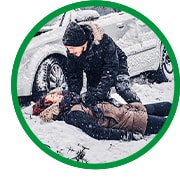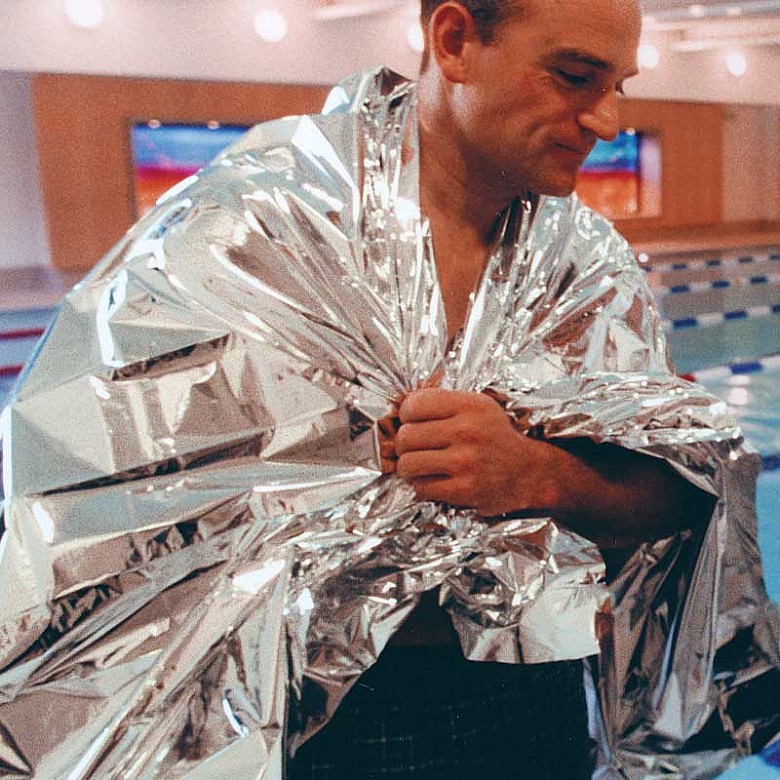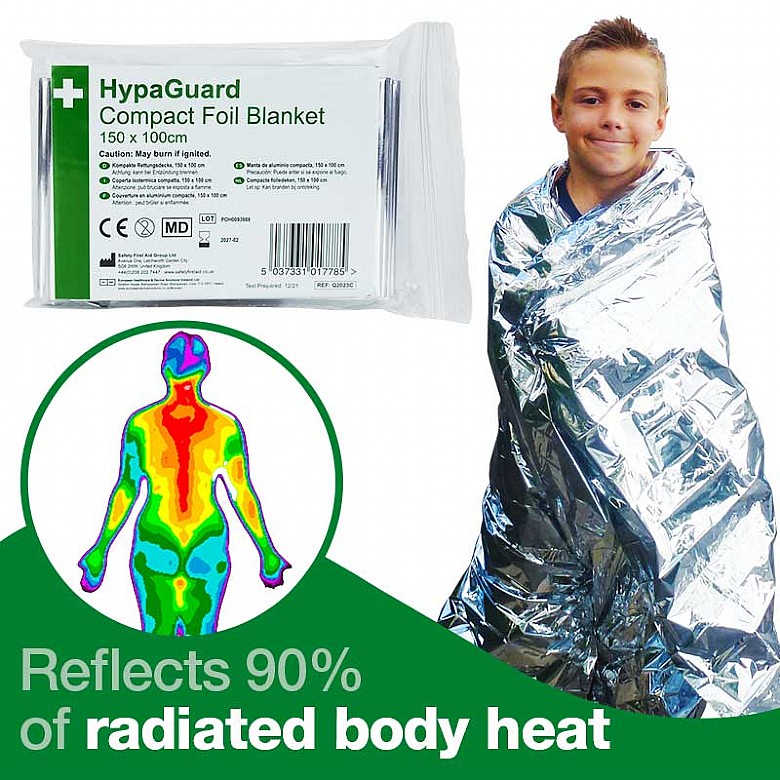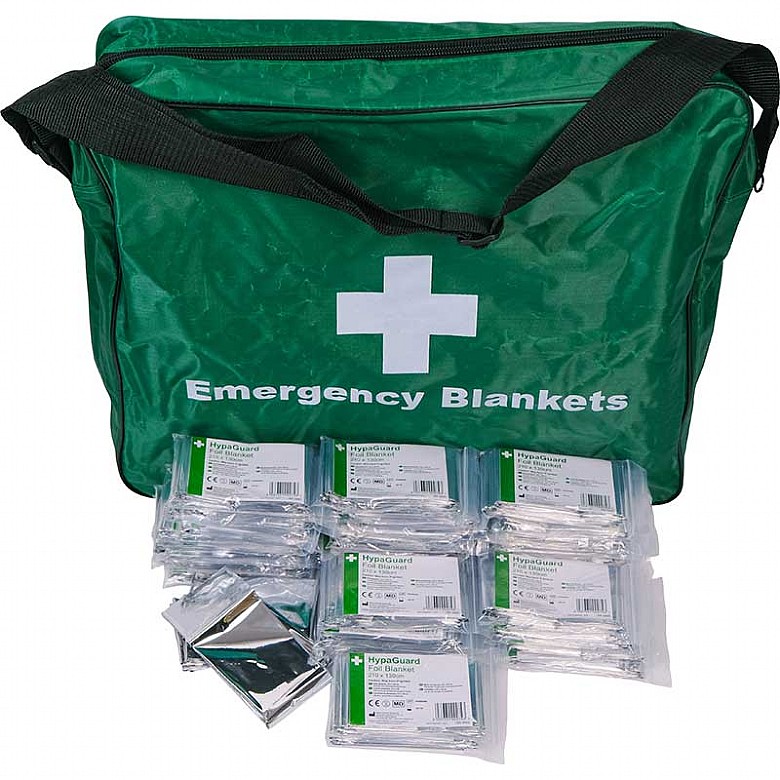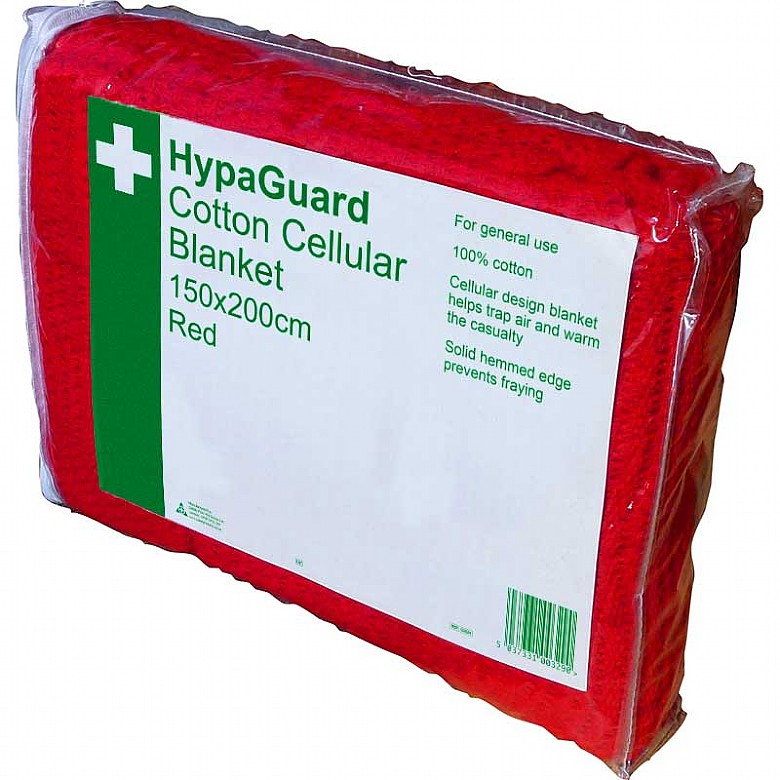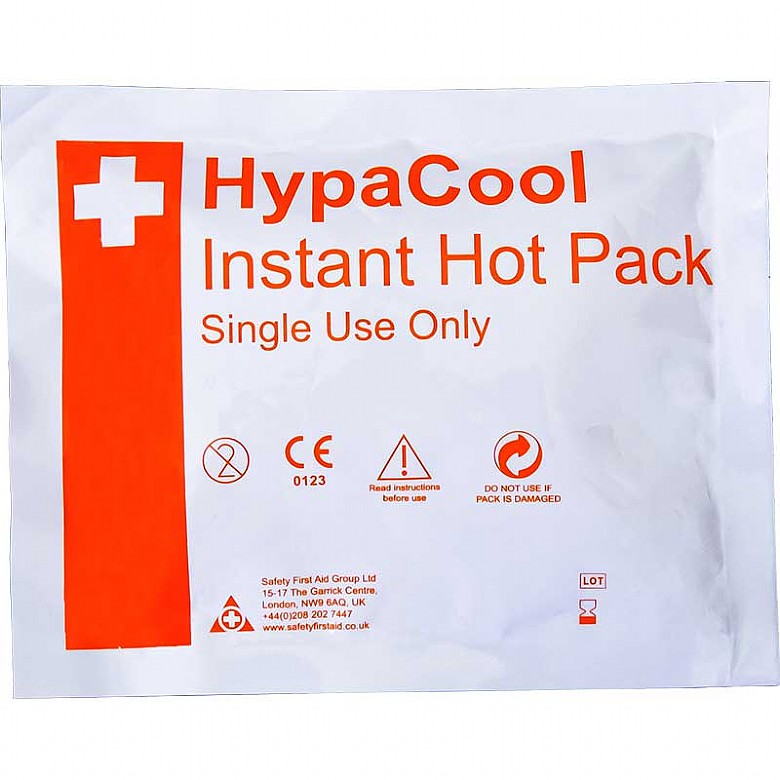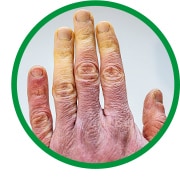
Whether you love it or hate it, winter brings with it a number of health and safety considerations. As winters get increasingly cold, the importance of proper preparation becomes even greater. Get ready for outdoor activities with appropriate first aid provisions and take precautions to stay warm whenever you face the elements.
Here are some considerations to ensure you and your first aid kit are ready for winter:
Be prepared for the cold winter ahead

The most obvious and important thing to consider during the cold winter months is staying warm wherever you are. Wear many layers when going outside, ideally materials like wool or fleecy synthetic fibres (cotton loses its ability to insulate and saps body heat when wet). You should also wear a hat, coat, scarf, gloves and warm boots or shoes when it’s especially cold. If you have a heart or respiratory problem, try to avoid going outside during really cold periods.
If you can, keep the temperature in your home above 18°C using a heater or fireplace. Try to heat all the rooms you enter frequently throughout the day, but if that isn’t possible, try to keep at least your living room warm and heat your bedroom before bed.
Finally, eating a nutritious, warm meal like soup at least once a day helps to keep you healthy and warm during the cold winter months.
The effects of the UK cost of living crisis
As the cost of energy continues to rise rapidly in the UK, it’s becoming increasingly difficult for people to stay warm during the winter.Using your heating intelligently and taking a few measures to reduce your energy bill can help you get through winter safely. To save energy, set your heating to turn on before you wake up and turn off when you go to bed. When it’s particularly cold out, set your heating to turn on earlier instead of turning up the thermostat.
You should also make sure you’re aware of what government assistance is available to you. There are benefits and grants to help with bills and advice for making your home as energy efficient as possible. Find out about benefits and financial support for living costs and more ways to save energy in your home from GOV.UK.
Cold and flu prevention during winter
Taking precautions to keep warm during the winter helps to prevent colds and the flu and can even help to prevent more serious health problems like strokes, heart attacks, pneumonia and depression. Read our blog on how to avoid colds and viruses to find out more about safe hygiene practices.Some people are more at risk in cold weather. These are:
- Low-income individuals
- Individuals with a disability
- Those suffering from long-term health conditions
- People over the age of 65
- Children under the age of 5
- Those with a mental health condition
- Pregnant people
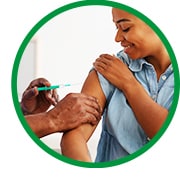 Get your vaccinations
Get your vaccinations
With the winter comes an increased risk of the flu and COVID-19. It’s
important to get the protection granted by vaccinations to increase your chances of staying healthy. Vaccines are a safe and effective method of building resistance to disease – it’s important to get vaccinated if you can.
The flu is an unpleasant experience for most, but in some cases, it can be dangerous or life-threatening. The viruses that cause the flu change year-on-year, which is why it’s important to get a vaccine every flu season.
The ideal time to get the flu vaccine is during the autumn months leading up to winter before the flu starts to spread.
Try to keep frequently used rooms in your home heated to a comfortable temperature, at least 18°C in the rooms you spend the most time in – this is even more important if you have a health condition. Contact a Gas Safe registered engineer to ensure your cooking and heating appliances are safe for use.
Ensure they’re stocked with enough groceries to last a few days in case they’re unable to leave home due to cold weather. If they do need to go out into the cold, encourage them to dress warmly and wear footwear with adequate traction.
Foil blankets are a compact and lightweight covering that work well to prevent the user’s body heat from escaping. Read more information about foil blankets on our blog.
Cotton blankets are a more comfortable solution for emergency warmth and make a great addition to any winter first aid kit.
The flu is an unpleasant experience for most, but in some cases, it can be dangerous or life-threatening. The viruses that cause the flu change year-on-year, which is why it’s important to get a vaccine every flu season.
The ideal time to get the flu vaccine is during the autumn months leading up to winter before the flu starts to spread.
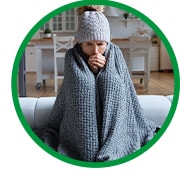 Keep warm if possible
Keep warm if possible
Try to keep frequently used rooms in your home heated to a comfortable temperature, at least 18°C in the rooms you spend the most time in – this is even more important if you have a health condition. Contact a Gas Safe registered engineer to ensure your cooking and heating appliances are safe for use.Check on at-risk relatives and neighbours
Older neighbours, friends and family may need assistance during winter. Reach out to people you know who could be affected by cold weather and ask if they’re feeling ill or need assistance.Ensure they’re stocked with enough groceries to last a few days in case they’re unable to leave home due to cold weather. If they do need to go out into the cold, encourage them to dress warmly and wear footwear with adequate traction.
What to stock in a cold weather first aid kit
While items like plasters, bandages and dressings should be found in all first aid kits, there are some specific items recommended to maintain an effective winter first aid kit. Read our blog to find out what should be in a basic first aid kit.Emergency foil blankets
Foil blankets are a compact and lightweight covering that work well to prevent the user’s body heat from escaping. Read more information about foil blankets on our blog.
Cotton blankets
Cotton blankets are a more comfortable solution for emergency warmth and make a great addition to any winter first aid kit.
Hot packs
Instant hot packs are a good way to generate heat in an emergency without the need for electricity. Read more about how to use heat packs on our blog.Cold weather first aid considerations
5 tips to stay safe in the ice or snow
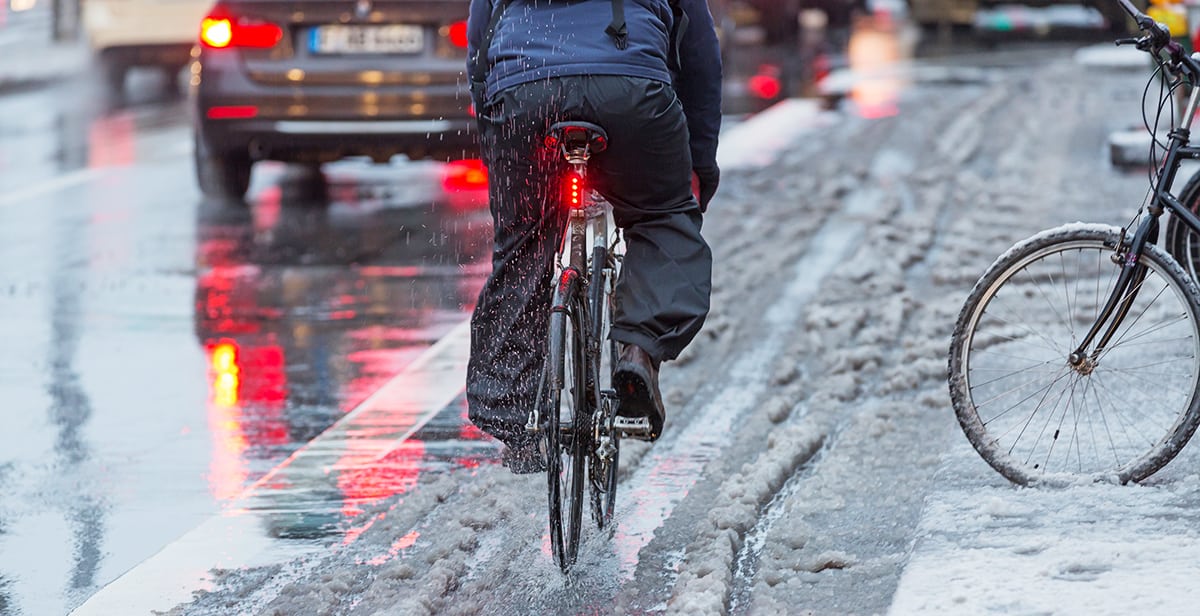
Ice and heavy snow can make it difficult or even dangerous to get from point A to B, whether walking, cycling or driving. The chance of slipping or skidding increases during the winter season – taking appropriate precautions helps to reduce the risk of injury when facing the elements.
1. Plan ahead
Heavy snow affects roads and footpaths, and traffic moves more slowly in risky driving conditions. If it’s possible, try not to travel during periods of extreme weather.If you can’t avoid travelling, plan your route and allow yourself extra travel time to ensure you get to your destination safely. Check for delays or road closures and check your car’s wipers, tyres and screen wash before setting off.
2. Drive safely in heavy snow
It’s safer to avoid driving altogether in heavy snow and icy conditions. If driving is a necessity, accelerate gently, use low revs and maintain a steady and constant speed. Start in second gear to alleviate skidding, and shift to higher gears as quickly as possible.Maintain a safe distance from other vehicles, keep a steady speed while going uphill, and use a low gear when going downhill. If you find yourself skidding, steer into the skid, keep your hands on the wheel, and do not slam the brakes.
3. Dress appropriately when walking
Dress warmly and wear shoes designed for walking in snow. Rubber or neoprene soles provide better traction than soles made from plastic or leather. Avoid heels if possible, opting for shoes with a flat bottom. Cleats or abrasive soles designed for walking on snow and ice are recommended for extreme weather.4. Use special care when entering/leaving vehicles and buildings
Exit vehicles and buildings carefully, using handles and railings for support when available. If you’re climbing into a car, use caution as you shift your weight and hold onto the car for support. Try to avoid putting your hands in your pockets as your arms can help you to keep balanced.5. Walk safely and use designated walkways if possible
Bend forward slightly and take short steps, keeping your centre of gravity directly above your feet as much as you can. Stick to designated pathways, always look ahead while walking, and avoid checking your phone.If you can’t avoid falling, try not to stretch out your arms to brace yourself – relax and fall on fleshy places like your thighs and buttocks, bend your head forward to avoid hitting it, and try to roll as you hit the ground to spread the impact.
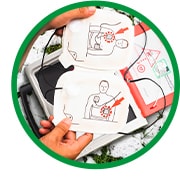 Can you use an AED in the cold?
Can you use an AED in the cold?
As with any electronic device, extreme weather can affect the usability of an AED. The cold can weaken the power of an AED’s battery and affect the adhesive pads’ ability to stick. Proper storage is essential to ensuring that AEDs are in working condition whenever they are required.Most AEDs have an operating temperature range of between 0°C and 50°C. Each AED is different, however, so you should check your device’s operations manual to find out its operating temperature range. To ensure your AED is kept at operating temperature, store it in an insulated case, an appropriate outdoor cabinet, or inside if possible.
To learn more about AEDs, check out our blog on everything you need to know about Automated External Defibrillators.
Frostbite
Frostbite is damage to the skin and body tissue caused by extended exposure to extreme cold, typically temperatures below 0°C. It can affect any body part, but is most common in extremities like the fingers, the toes, the nose or the face.If left untreated, frostbite can permanently damage the affected area, so prevention or immediate medical intervention is important. Here are some early symptoms of frostbite:
- Pins and needles in the affected area
- Numbness of the skin
- Skin that is hard and waxy to the touch
- Stiffness in the muscles or joints
- Discoloured skin
To treat frostbite, bring the victim to a warm environment as quickly as possible. Do not rub or apply pressure to the affected area. If possible, leave the rewarming of the frostbitten area to a healthcare professional — if not, a bath at 37°C - 39°C is recommended. Strong painkillers are also recommended, as the process of rewarming can be painful.
Hypothermia
Hypothermia is the state in which your body loses heat faster than it can generate it, signified by a drop in body temperature to below 35°C. It is a medical emergency and needs to be treated in a hospital by medical professionals.Hypothermia affects your body’s ability to function — your heart, nervous system and other major organs function less effectively. If untreated, hypothermia will lead to total organ failure and death. Here are the symptoms to watch out for:
- Severe shivering
- Cold and dry skin
- Lethargy, confusion and slurred speech
- Slow and shallow breaths
Call emergency medical services immediately if you suspect someone is suffering from hypothermia. While you’re waiting for help:
- Move the affected person indoors as quickly as possible
- Remove any wet clothes and wrap them in a dry towel or blanket (ensuring that their head is covered)
- Give them a warm drink and sugary foods like chocolate
- Keep them awake by staying with them and talking until help arrives
- Warm the victim with a hot bath, hot water bottle or heat lamp
- Do not rub their limbs or extremities
- Do not give them alcohol
Takeaway
Winter can be a wonderous season for festivities and outdoor activities but staying aware of the potential risks is paramount. Ensure your first aid kits are appropriately stocked and refresh your knowledge on treating potential cold-weather injuries, and you’ll be ready for any situation.Read our other blogs for more information on first aid or contact us for further advice and information on our products.
About the author:
Jo Stokes is a writer, marketer and trained first aider at First Aid Online.
Find out more about Jo.
By Jo Stokes


